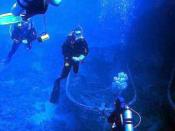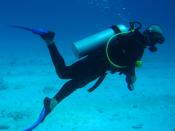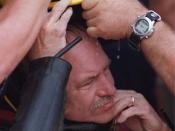The underwater environment poses multiple problems to animals that have evolved to live at the surface which need to be overcome if the animal is to utilise the marine setting as a habitat and foraging environment. These problems are associated with the inability of the terrestrial respiratory surface to extract oxygen from water and thus the resulting hypoxic conditions, and the increasing degree of pressure resulting from the overlying column of water, the effects of which become increasingly problematic as the nature of the dive becomes longer and deeper, respectively. However, despite these difficulties, many have reverted to a semi- or fully aquatic lifestyle, employing a variety of anatomical modifications and variations on physiological properties to avoid these impediments and thus allow for a successful marine existence.
One problem associated with diving that has attracted a lot of attention due to the implications it has for human divers, is decompression sickness, or 'the bends'.
This occurs as a result of the saturation of the body fluids and tissues with nitrogen which remains there as the body is unable to metabolise it. This dissolved gas can only escape when the nitrogen pressure in the lungs is decreased, but this can take hours to effect and as such, bubbles can develop in the body fluids as a consequence of rapid ascent. Human scuba divers overcome this problem by following decompression tables formulated by the US navy such that for a work period of 1hr at 190 feet depth requires a total decompression time of approximately 3hours. Diving mammals and birds, however, are observed to frequently make rapid ascents and dive repeatedly, apparently avoiding such affects thus implicating some physiological adaptation not manifest in ourselves.
A common adaptation appears to be the collapse of the alveoli and lungs prior to a dive such...


